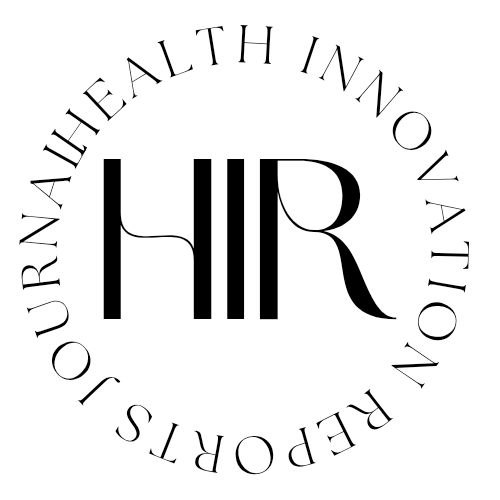
Health Innovation Reports
ISSN: 3080-7557
DOI: https://doi.org/10.64048
Focus and Scope
Peer Review Process
Publication Frequency
Open Access Policy
Archiving
Criteria for Acceptance
Language, Scientific Writing, and Figures
Plagiarism Detection and Similarity Screening
Conflict of Interest Disclosure
Research Involving Human or Animal Subjects
Informed Consent
Post-Publication Corrections and Retractions
Health Innovation Reports (HIR) is a quarterly peer-reviewed open-access journal dedicated to the dissemination of high-quality research in healthcare advancement, nursing science, public health, clinical innovation, medical technologies, and interdisciplinary biomedical sciences. The journal welcomes submissions that propose novel methodologies, contribute to policy and practice, or foster collaboration across disciplines.
Scope includes, but is not limited to:
Nursing, midwifery, and allied health innovations
Biomedical and translational research
Public health policy and health systems research
Health informatics and artificial intelligence
Digital health, eHealth, and mHealth technologies
All manuscripts undergo a rigorous double-blind peer review process. Submissions are initially screened by an editor to ensure basic compliance with journal policies and suitability. Eligible manuscripts are then assigned to at least two independent expert reviewers.
Reviewer Decisions:
| Decision Type | Description |
|---|---|
| Accept | Publish without modification |
| Minor Revisions Required | Small improvements needed; fast resubmission expected |
| Major Revisions Required | Substantial changes required; new review cycle may apply |
| Reject | Does not meet scientific or ethical standards |
Decisions are usually issued within 3–5 weeks, depending on reviewer availability and response time. Revised manuscripts are expected within 2 weeks (minor) or 1–3 months (major).
HIR is published four times per year as follows:
Issue 1: January – February
Issue 2: April – May
Issue 3: July – August
Issue 4: October – November
Accepted articles are first published online in an “Articles in Press” section before being formally assigned to an issue.
HIR provides immediate open access to all published content. Articles are published under the Creative Commons Attribution 4.0 International (CC BY 4.0) license, allowing free use, distribution, and reproduction provided proper citation is given.
Authors retain copyright and are encouraged to deposit their final articles in institutional or subject repositories.
HIR ensures the long-term preservation of published content through the following:
LOCKSS (Lots of Copies Keep Stuff Safe)
Full-text content permanently stored on the journal website
Manuscripts are evaluated based on:
| Criterion | Description |
| Originality | Must present new data, perspectives, or methods |
| Relevance to Scope | Should align with the journal’s aims |
| Scientific Rigor | Sound methodology and accurate analysis |
| Ethical Compliance | Must meet ethical standards for research |
| Language and Formatting | Should adhere to academic writing norms |
Papers failing to meet baseline quality may be rejected at the editorial review stage without external peer review.
Submissions must be in clear, fluent English. Authors are expected to:
Use scientific writing that is concise and coherent
Provide well-labeled, high-resolution figures
Avoid spelling or terminology errors in graphical content
Authors may be asked to revise the manuscript for language or figure quality before or after peer review. External editing support is recommended for non-native English speakers.
HIR uses iThenticate to detect text similarity. The journal adheres to COPE guidelines on plagiarism and self-plagiarism. Any manuscript with excessive overlap will be returned to authors or rejected outright. All articles must be original and appropriately referenced.
All authors must disclose potential conflicts, financial or non-financial, including:
Employment or consultancy roles
Grant funding or sponsorship
Advisory or board positions
Ownership of patents or shares
| Type of Interest | Example |
| Financial | Research grants, speaking fees |
| Institutional | Employment, board membership |
| Personal or Ideological Beliefs | Affiliations that could influence objectivity |
The corresponding author is responsible for collecting and submitting disclosure forms for all co-authors.
Human Studies: A statement confirming ethical approval from a recognized institutional review board is required. Research must comply with the Declaration of Helsinki. Retrospective studies must indicate whether formal consent was needed.
Animal Studies: Authors must confirm compliance with national and institutional guidelines for animal welfare. Ethics approval should be stated explicitly.
Example Statements:
“Ethical approval: The study protocol was approved by [Name of Committee] under reference [Number].”
“This study did not involve human or animal subjects.”
Informed consent must be obtained from all individuals whose identifiable data are included in the manuscript (e.g., photos, quotes, clinical information). If data anonymity cannot be fully guaranteed, consent for publication must also be obtained.
| Scenario | Required Statement |
| Standard human participant study | "Informed consent was obtained from all participants." |
| Images or identifiable information | "Consent for publication was obtained from participants." |
HIR maintains transparency and scientific integrity through:
Corrections: Issued when minor errors are identified
Retractions: For major errors, ethical breaches, or misconduct
Expressions of Concern: To alert readers about unresolved issues
All post-publication updates will include a timestamp and remain publicly accessible for transparency.

Health Innovation Reports
ISSN: 3080-7557
DOI: https://doi.org/10.64048
Health Innovation Reports - Official Journal Website
Copyright © 2025 Health Innovation Reports. All rights reserved.
![]() Health Innovation Reports (ISSN: 3080-7557) is licensed under a Creative Commons Attribution License 4.0 (CC BY 4.0).
Health Innovation Reports (ISSN: 3080-7557) is licensed under a Creative Commons Attribution License 4.0 (CC BY 4.0).